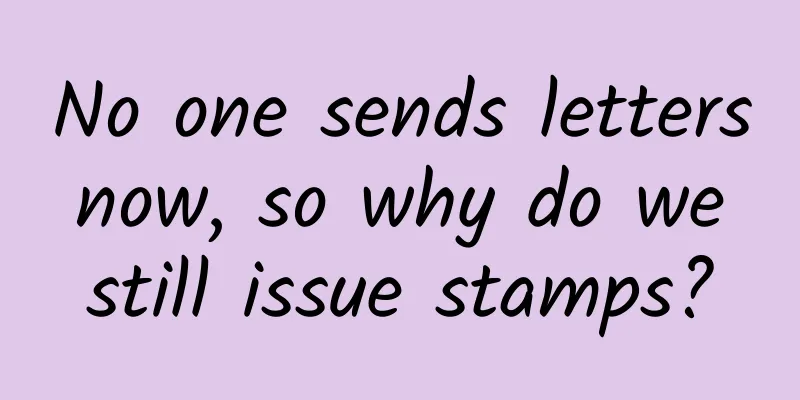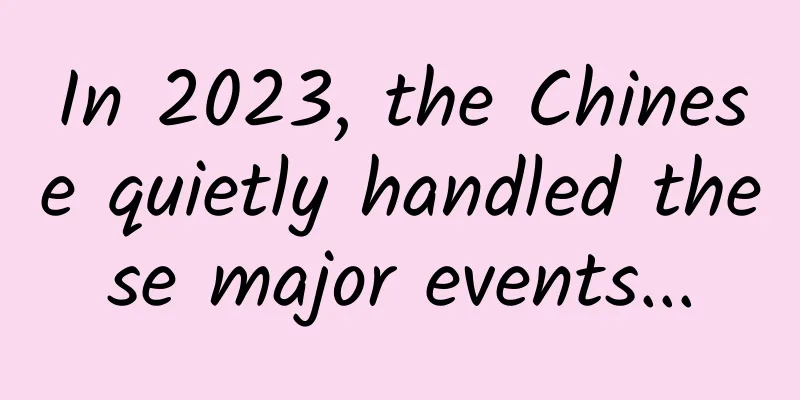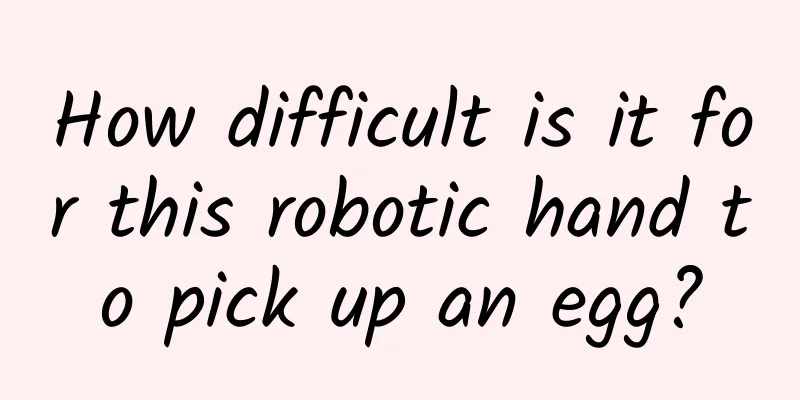No one sends letters now, so why do we still issue stamps?

|
"A thin piece of flowered paper with tiny teeth on all four sides. If two friends from two places want to have a heart-to-heart talk, they must ask it to do the errand." The answer to this little riddle is a stamp, which means that stamps can be used to send letters. However, nowadays when we want to send something, we usually use WeChat, email or express delivery. Many young people may not have the experience of tearing stamps, sticking stamps and sending letters. So, is there still value in stamps now? What is the use of them? Some friends think stamps are very beautiful, some friends think stamps are collectibles that will continue to appreciate in value, and some friends who know stamps will tell us that stamps are "national business cards", "micro-encyclopedias", and special works of art worth appreciating. These answers are all correct, stamps have so many characteristics. Next, let's talk briefly about the birth and development of stamps. The birth of stamps is not a legend You may have heard this story. In 1836, on the outskirts of London, a girl quarreled with a postman - "You have to pay!" "I have no money, I'll return the letter to you, I don't want it!" The noise interrupted the daily walk of local teacher Roland Hill, and he quickly stepped forward to ask the reason. The reason for the quarrel was simple. The girl couldn't afford the postage because the postage in Britain was very expensive at that time. Even for workers with good income, receiving just a few letters could consume their monthly salary - all the letters were payable on delivery. The enthusiastic Roland Hill helped the girl advance the postage, but the girl admitted embarrassedly that she had actually agreed with her relatives to draw different codes on the envelopes to convey information. She had just seen the circle on the envelope to report safety, so she didn't have to pay to receive the letter. Roland Hill didn't like this deception, but he felt that the postage was indeed too expensive. He was entangled and thought hard, and finally proposed a plan to prepay the postage to buy stamps as payment receipts, and then stick the stamps on the envelopes to send letters, which greatly reduced the postage. Therefore, Roland Hill became the father of stamps. The above is probably the most widely circulated story about the invention of stamps, and it sounds very legendary, but we are promoting science in China after all, so we should seek truth from facts. The invention of stamps, like many other scientific discoveries and inventions, was not a "ghost idea" that someone came up with on a whim, but the wisdom of the people was carried forward by a representative figure. As early as 1653, someone in France invented a payment ticket that was similar to a stamp and clipped to an envelope. In 1680, someone in Britain invented a stamp on an envelope to indicate that the postage had been paid. In Rowland Hill's time, many people in Austria, Scotland and other places also proposed the idea of stamps. In addition, many places have used postage-paid certificates similar to stamps. Rowland Hill probably absorbed the ideas of his predecessors and published a book called "Postal Reform: Its Importance and Reality". Later, he was able to reform the British postal service at that time, systematically promoted the use of stamps, and issued the famous "Black Penny" and "Red Penny" stamps. Therefore, I am afraid that we cannot say that Roland Hill invented the stamp out of thin air. His most important contribution was the successful establishment of the entire postal system, so he is also respected as the "father of the modern postal system." Not long after the invention of the stamp, stamps were introduced in various parts of the world, because each country had postal needs, and the printing technology at that time was slightly adjusted and improved to meet the demand for early mass production of stamps. National business card, mini-encyclopedia The earliest stamps were vouchers indicating that postage had been paid and were issued on behalf of the country. Therefore, the designs on stamps initially focused on reflecting authority, often using portraits of the monarch or head of state at the time or national symbols, etc. However, later, in addition to serving postal services, stamps gradually took on commemorative significance, such as major events, festivals or historical figures, which were often used as the subject of stamps. Some stamps are also issued to showcase national development achievements, literature and art, nature, historical sites, religious customs, etc. When choosing the content of stamps, countries around the world will carefully consider and choose the content that best represents their country's characteristics as the stamp theme. If you can name all the stories on a country's stamps, then you must have a good understanding of the country's culture. It is no wonder that a small stamp with only an inch of space can contain the world and can be called a "national business card" and a "miniature encyclopedia." In my country, the design of stamps requires a special stamp selection advisory committee to conduct rigorous argumentation to ensure that stamps can tell Chinese stories well, always adhere to the principle of unity of politics, artistry and people-orientedness, and adhere to the correct political direction. Opening the stamp issuance catalog of our country, you will find that this is a microcosm of Chinese civilization and a continuous historical record, and of course, the magnificent mountains and rivers of the motherland. All these have given stamps new value and meaning, and also answered the question raised at the beginning of this article. From the perspective of usage, stamps have indeed gradually faded from everyone's sight, but as a carrier of civilization, stamps have become increasingly rich in content, and the printing has become increasingly exquisite. Fluorescent inks, AR and other technologies have also been used to make stamps better looking and more interactive. Discover the beauty of stamps with your own hands However, if we want to fully appreciate the beauty of stamps and understand the knowledge behind them, we still have to spend some time. Because stamps have a characteristic, that is, they have great meaning and profound connotations, but too little description, often just a beautiful picture with a line of explanatory text. More information and background knowledge are difficult for us to understand, and we often need to look up materials to fully appreciate them. Take the miniature sheet issued on November 8, 2002, for example. If we only get this stamp, it will look like this: Image from: 2002-21 "Hukou Waterfall of the Yellow River" Miniature Sheet | Stamp Catalogue (chinesestamp.cn) We can only intuitively feel the majestic momentum and know that the place on the stamp is called the Hukou Waterfall of the Yellow River. Even if we go online to search on authoritative websites, we can often only see such information. Image from: 2002-21 "Hukou Waterfall of the Yellow River" Miniature Sheet | Stamp Catalogue (chinesestamp.cn) And if we have the right reference books, we can easily find such information: Image from: 2024 Philatelic Calendar "A Small World - Famous Mountains and Rivers of China on Stamps" In addition, the annual stamp yearbooks I get often contain content from all fields, which is a bit dazzling and not systematic enough. However, many books related to stamps systematically organize stamps with specific content and write descriptions for them. For example, the 2024 philatelic calendar "A Small World - Famous Mountains and Rivers in China on Stamps" uses stamps as a medium, mountains and rivers as points, and time as a line to systematically sort out and comprehensively present the famous mountains and rivers, festivals, solar terms, and zodiac-related stamps issued by China. It is a unique experience to read through it. Images rearranged from: 2024 Philatelic Calendar "A Small World - Famous Mountains and Rivers of China on Stamps" In conclusion, the invention of stamps is actually the crystallization of the wisdom of the masses. Although the use value of stamps has gradually disappeared, their cultural value is still brilliant. If we want to better appreciate stamps, we must do more research and ask more questions. Author: Ding Zong |
<<: AlphaFold goes beyond protein folding and will drive the next era of "digital biology"?
>>: Why is the rarely seen Yunnan Paulownia endangered?
Recommend
Let’s talk about effective strategies for attracting new users from 5 aspects
All roads lead to Rome, and all roads in Rome lea...
Qianmeng Online Earning 36 Strategies Full Course
Preface to Qianmeng.com’s 36 Strategies for Makin...
The United States investigates Tesla cars. Car accident analysis shows that automatic driving has hidden dangers and cannot recognize lights
Tesla is one of the most well-known autonomous dr...
iPhone 6 is not new to Chinese users
Several people familiar with the Chinese mobile d...
The Origin and Experiment of the Infinite Monkey Law
Leviathan Press: According to the calculation met...
Competitive product analysis: 5 scenarios of competitive product analysis methods
Competitive product analysis occupies a very magi...
Changan CS75 ends Haval H6's 92-month sales streak? Great Wall Motors is dissatisfied, while Changan maintains a calm attitude
Recently, two national SUVs, Great Wall CS75 and ...
How to make data statistical tables for SEM? SEM data reports and problem analysis ideas!
Account data statistical analysis is the most imp...
The functional differences between branding, advertising, marketing and public relations!
Many people have this question when they first st...
Tik Tok account blocked? Guide to unblocking TikTok account!
If your Douyin account is banned, how should you ...
A guide to entering the short video industry!
Let's take the short video leader TikTok as a...
As a developer, how do you think Apple should improve its developer tools?
[[164459]] My colleague Alex Denisov and I have d...
New progress in the search and rescue in Ailao Mountain! Experts tell us: How dangerous is field scientific research?
Lost contact in Ailao Mountain 4 geological surve...
LeEco's million-dollar luxury car parked automatically but didn't move at press conference
No different from the earlier news, Faraday Futur...
PPTV Quantum Dot TV 65Q900: Pursuing the Ultimate Performance Experience in the Concept of Design First
When TV sets began to be more integrated into the...









